SEO is one of those things that everyone has an opinion about, and even between SEO pros who know what they’re talking about, those opinions don’t always line up.
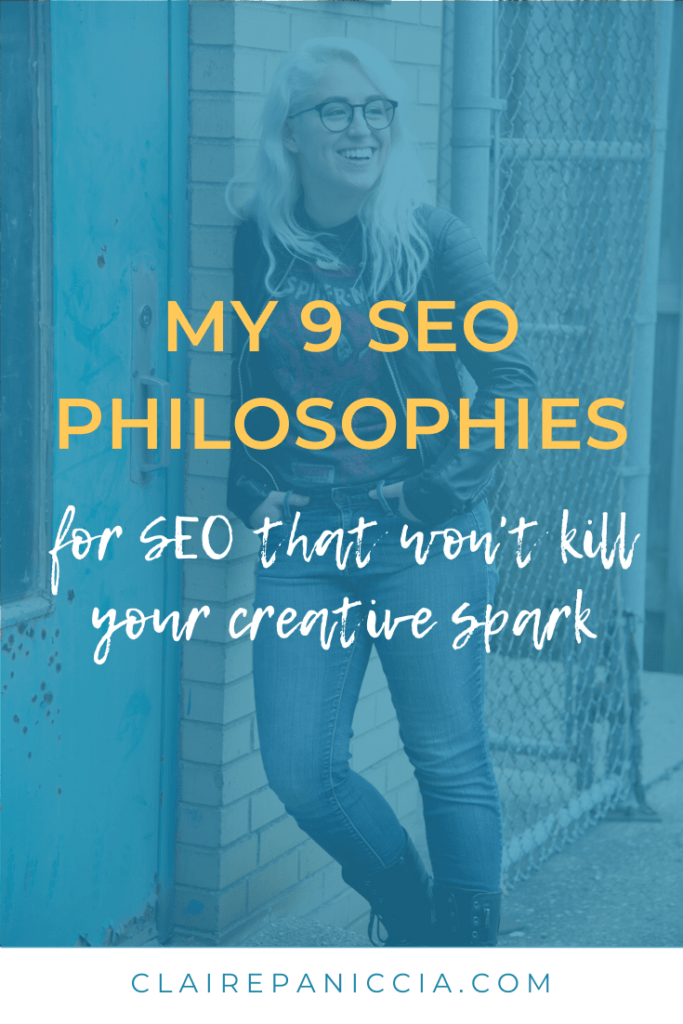
It can make trying to learn (or even just comprehend) SEO difficult.
There’s a few reasons for this abundance of conflicting opinions.
For one, SEO is an industry based entirely on figuring out how to do well with Google’s top secret algorithm, which in addition to being top secret, is also constantly changing.
For another, how to best do SEO can vary a lot depending on your business model, site, industry, where you are in your business journey, and a million other factors.
So of course everyone has a different opinion.
Add to that the tendency for the SEO industry to be full of bro-y marketing professionals who always seem to need to prove something (other female-identifying SEOs and I have deemed them “SEO bros”), and it quickly becomes a veritable mess of strongly contended opinions that everyone seems extremely confident in.
But I like to do things different.
(Big shocker, if you know me *extreme sarcasm*)
I don’t like to stick to one specific “proven” strategy or formula. I know that everyone is different, everyone’s creative process is different, and everyone’s business is different. Therefore, everyone’s SEO strategy will be different.
But I do have a core set of SEO Philosophies that I stand firm on and that drive all of my work, for myself and for my clients.
They’re a biiiit different from what other SEOs might say are “the most important” for SEO. But hey, that’s just how we do things around here.
- SEO is simply making sure your website & content speak Robot as fluently as they speak Human
- SEO is only one piece of a larger content marketing ecosystem
- Not all your content has to be SEOtastic
- Just keep publishing
- Protect your Spark. Don’t be consumed by Strategy
- Google is the protector of the Wild Wild Web
- Algorithm updates are good for the internet
- Measure and monitor your analytics, but don’t obsess
- Have a larger vision for your audience
1. SEO is simply making sure your website & content speak Robot as fluently as they speak Human
This is true for any and every type of SEO, and every little granule of SEO best practices, large and small.
Here’s why:
Google (and every search engine) is first and foremost trying to give their users (the searchers) the best experience possible. So everything that Google wants you to do is in the benefit of the Human searcher.
Not sure how to do a certain optimization task? How would the Humans finding your content want it to be?
Not sure what keyword to target? What phrases are real life Humans typing into the search bar when they’re looking for whatever it is you’re offering?
All you’re doing when you optimize your site and/or content for SEO is making sure that 1) your target (Human) audience will freaking love it, and 2) making sure the Robots know that, too.
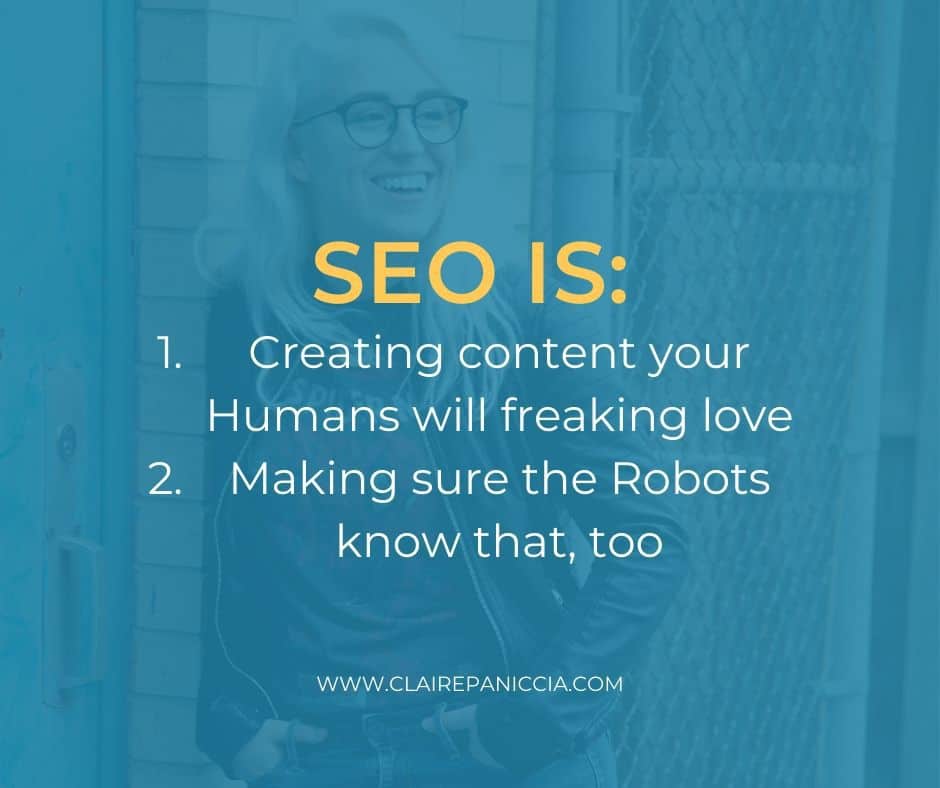
Humans first, Robots second.
Remembering this really makes everything SEO so much simpler (which unfortunately is not the same as easier).
2. SEO is only one piece of a larger content marketing ecosystem
The thing about publishing content on your site is that it’s not just good for SEO. Content marketing can do so many other things for your site and business.
Content can nurture your prospective customers or clients.
Content can establish your expertise in your industry.
Content can be great for sharing on social media.
Content can help establish relationships with other brands.
Content can help build your email list.
There’s so many other pieces to your content marketing ecosystem besides SEO. It’s important to remember that and not let yourself get so invested in SEO that you forget about all the others.
3. Not all your content has to be SEOtastic
Related to #3, some of the content you publish won’t be super duper great for SEO. And that’s okay.
That doesn’t mean it’s not doing anything to support your brand. It just means it’s supporting it in a different way than SEO.
Like maybe some of the other ways I listed in #3.
It makes sense if you think about it.
The qualities that make a post perfect for social media shares are pretty different from the qualities that make a post SEOtastic. Sometimes there will be overlap. Sometimes there won’t. And that’s okay.
4. Just keep publishing
One important thing for content creators to tell themselves is “Just keep publishing…”
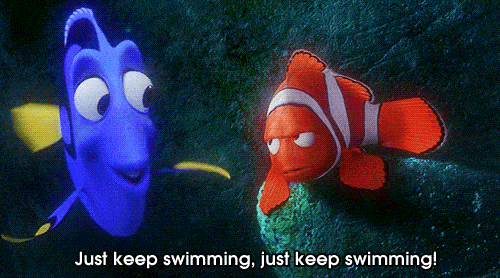
It can be super discouraging when you work your ass off on a new post, did everything you could to optimize it for SEO, and it doesn’t get the results you were hoping for.
Trust me, I am very familiar with that feeling.
But the thing is, that’s just how the game rolls.
Sometimes your post will grab the first page for your chosen keyword right away, jumping right to the top of your list of traffic-driving posts in Google Analytics.
Sometimes post you’d felt discouraged by will slowly climb the ranks of Google’s search results over time, and 6 months later it’s one of your top 10 traffic drivers and you didn’t even realize.
And sometimes it never ranks on Google at all.
It’s important to create the best, most engaging content you can, optimize it as well as you can, publish it, and then let go of the outcomes and move on to the next one.
Trust me, it’s so much better for your resilience as a content creator.
5. Protect your Spark. Don’t be consumed by Strategy
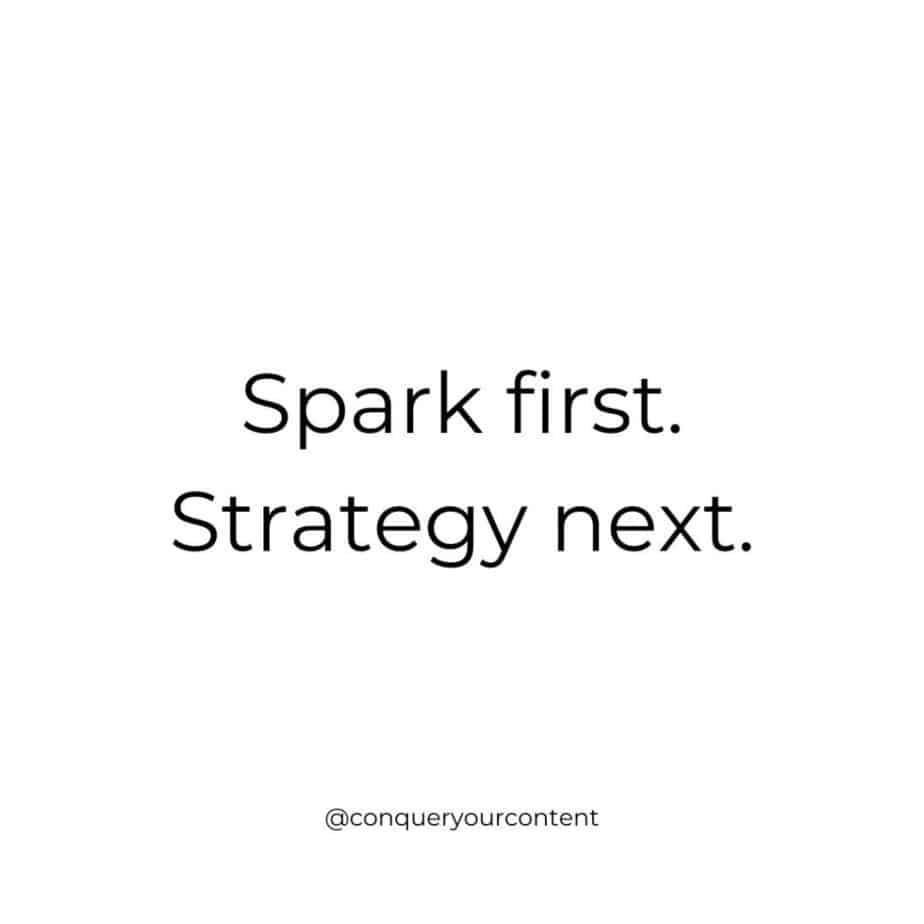
I talk a lot about Spark. To be honest, Spark has nothing to do with SEO, but it has everything to do with you as a content creator and with connecting with your audience.
If your online business was a living body (with, like, social media hands, and a systems nervous system), your Spark is the beating heart.
It’s the inner motor that got you started on this road of entrepreneurship.
Spark is the driving force and energy that inspires you to do what you do.
There’s a lot of reasons why Spark matters to your content.
One of them is that content without Spark just plain doesn’t work. It won’t resonate with your readers, so it won’t inspire them to take actions that support your business (like join your email list or buy your products).
The other reason is that forcing yourself to create content outside of your Spark for too long is a steep road to burnout. Which 1) f*cking sucks, and 2) means you’ll lose #4.
Creating from a place of Spark first means your content will resonate with your readers and inspire action, you won’t burnout, and you’ll be more resilient as a creator.
Sure, SEO and strategy matter. I’m an SEO pro, of course I believe that. But they should come second, after Spark.
6. Google is the protector of the Wild Wild Web
The internet was always a wild wild west type of situation.

The fact that Google’s raison d’etre (and I mean the search engine, not necessarily the corporation) is to show searcher’s the best possible results for their search query means that it’s algorithm is designed to reward good high quality content.
Does it do that perfectly every single time? No. But those of us who remember Google in the 90’s can definitely agree that it’s gotten much, much better at it.
These days, we as content creators and marketers know how hard it is to get in front of our audiences without feeling like we have to pay to play (hello Facebook ads, Instagram ads, all the ads).
We all know the frustration of feeling like the small fry in the shadow of a larger competitor who has the cash to drop on ads and promotion (meanwhile we’re fuming because we know our content is so much better than theirs).
But that’s the beautiful thing about the Google search engine.
There’s absolutely no way to “pay to play” with Google’s organic search results.
The only way to show up on the first page of Google is to create the best damn content in the land for that particular keyword, and then prove to Google that that’s the case.
It’s a meritocracy.
True, it’s not a perfect meritocracy. But it gets closer with every algorithm update.
7. Algorithm updates are good for the internet
If you’ve been blogging for any length of time, you’re familiar with the utter destruction (or blessing) of a major Google algorithm update.
With no warning, your organic SEO traffic could leap to new heights or (more commonly) plummet to new lows.
I’ve seen it happen many times, to many different sites.
When you’re one of the people experiencing the plummet-y side of algorithm updates, it can be hard to see them as a good thing.
But the truth is, Google’s algorithm updates are good for the internet.
Because each update is an attempt to get the algorithm just a little bit closer to that ideal of giving every searcher the best possible results.
8. Measure and monitor your analytics, but don’t obsess
If you don’t already have Google Analytics set up on your site, I highly recommend you go do that right now.
Yes, even if your site is brand new and you don’t have any traffic to track yet!
Because soon enough, you will. And when you do, you’re going to want to learn about that traffic and where it’s coming from and how it’s spending time on your site.
But you can’t do that if you don’t have Google Analytics set up.
When you do have it set up, it can be tempting to check it all the time, or check it obsessively after you publish a post, and beat yourself up if you don’t see any increases.
To which I say: CEASE AND DESIST!
Analytics are not how you should measure your success or progress as a content creator.
It’s a tool to measure and monitor what’s working over time, but it’s not a reflection of the value of what you’re publishing (or your site or business or self).
You’ll be looking in increments of weeks and months, not days.
Stop obsessing. Just keep publishing.
9. Have a larger vision for your audience
It’s important to have a larger vision for your audience (and business in general). What journey are you taking them on with your content? What actions do you want them to take?
This helps you decide what you want your traffic to do once you’ve brought them to your site and content. Once you decide that, you’ll be able to set up whatever you need to set up to help them to do that.
If you want your audience to click your affiliate links, you’ll need to find or create opportunities in your content to insert affiliate links in a way that makes sense.
If you want your audience to opt in for your free masterclass, you should write content around the topic of the masterclass, and promote the masterclass in the posts.
If you’re promoting a coaching session, write content about common things you hear your ideal clients struggling with, and promote your coaching sessions at the end of the posts.
Bringing readers to your content with SEO (or however you drive traffic) is one thing, but you need to have something for that traffic to do once it’s there (ideally something that supports your business goals).
Besides that, having a big picture vision helps keep you motivated to keep publishing new content.
These are the core principles that drive all of my SEO and content work, both for my own site and for my clients and students.
It’s important to me that SEO never eclipses the creative spark that’s at the heart of good content, so my philosophies bridge the gap between Human Spark and Robot Strategy that I see so often with online creators.
Free SEOtastic Flowchart & Checklist
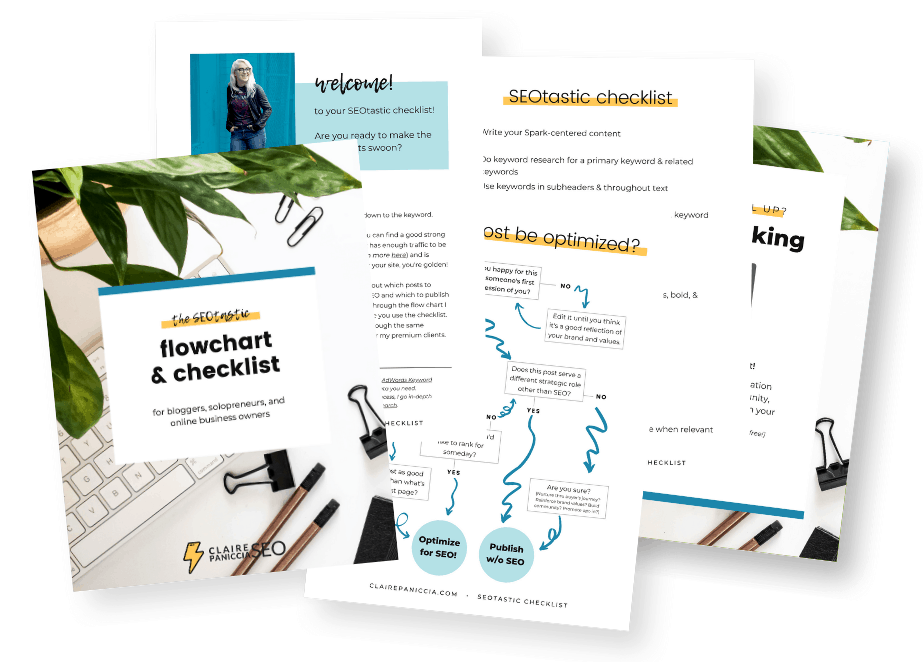
Algorithm updates keeps the fire on in all the seo experts around the world. I enjoyed reading this. Thanks for sharing your thoughts